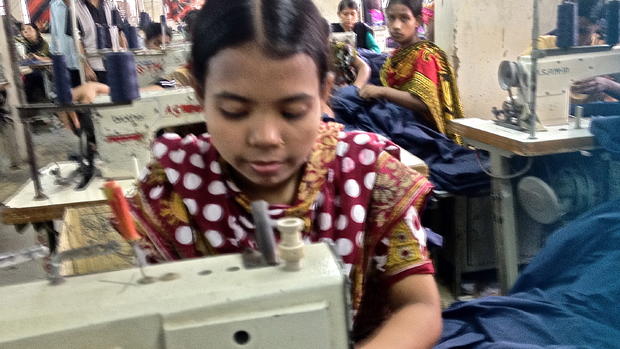Reporter's notebook: Going undercover inside a Bangladesh garment factory
(CBS News) DHAKA, Bangladesh -- Getting inside a garment factory in Bangladesh isn't easy.
It's an enormous industry. There are more than 4,000 factories, employing an estimated 4 million people. Garments and textiles make up about 80 percent of Bangladesh's export earnings.
In a country where many live in grinding poverty, factory jobs are prized, even though the minimum wage is just $38 a month.
But Bangladesh has been unnerved by a series of deadly accidents. In November, a fire in a garment factory killed more than 100 workers. Last month, an eight-story factory complex collapsed, claiming more than 1,100 lives.
Factory bosses know the outside world is watching, so they're extra-cautious about who they let in and what they show them.
To get a candid view of Bangladesh's garment factories, we posed as buyers. We told the managers we met that we wanted to source clothes as cheaply as possible.
What we saw inside some of their factories was hair-raising.
In one four-story facility we noticed there were hardly any fire extinguishers. On a floor where several hundred workers toiled over sewing machines, we counted only two extinguishers. Signs on the wall marked where they should have been.
In another factory, where they make denim clothes for export to Europe, we saw young workers giving jeans a fashionable "distressed" look by spraying them with potassium permanganate. That's a toxic substance that can cause damage to the nervous system.
- CBS News goes undercover in a Bangladesh clothing factory
- Water, "luck" helped Bangladeshi seamstress survive after being trapped 17 days
- Bangladesh ends building collapse search; final toll is 1,127
Some of the workers weren't even wearing face masks.
Another precarious-looking factory had just one rickety fire escape for its 400 workers, who were sewing children's clothes for export to Germany. Some of them appeared to be children themselves.
Many of the factories we saw were making clothes for well-known U.S. and European brands. Some of those companies seem to be unaware not only of the working conditions inside factories, but even where their clothes are produced.
Many retailers source garments through suppliers or middleman, who then subcontract to factories. Even those retailers that do inspect factories may not be getting an accurate picture.
Some workers told us that bosses coach them on what to say to visitors. Labor activists say many factories make special preparations to appear compliant with international standards during inspections.
That may explain some of the stranger things we saw inside Bangladeshi factories: a "baby room" where there were no babies, or even any toys; and "firefighting tools" displayed on the wall and helpfully labeled in English -- a language that hardly any of the workers could read.

